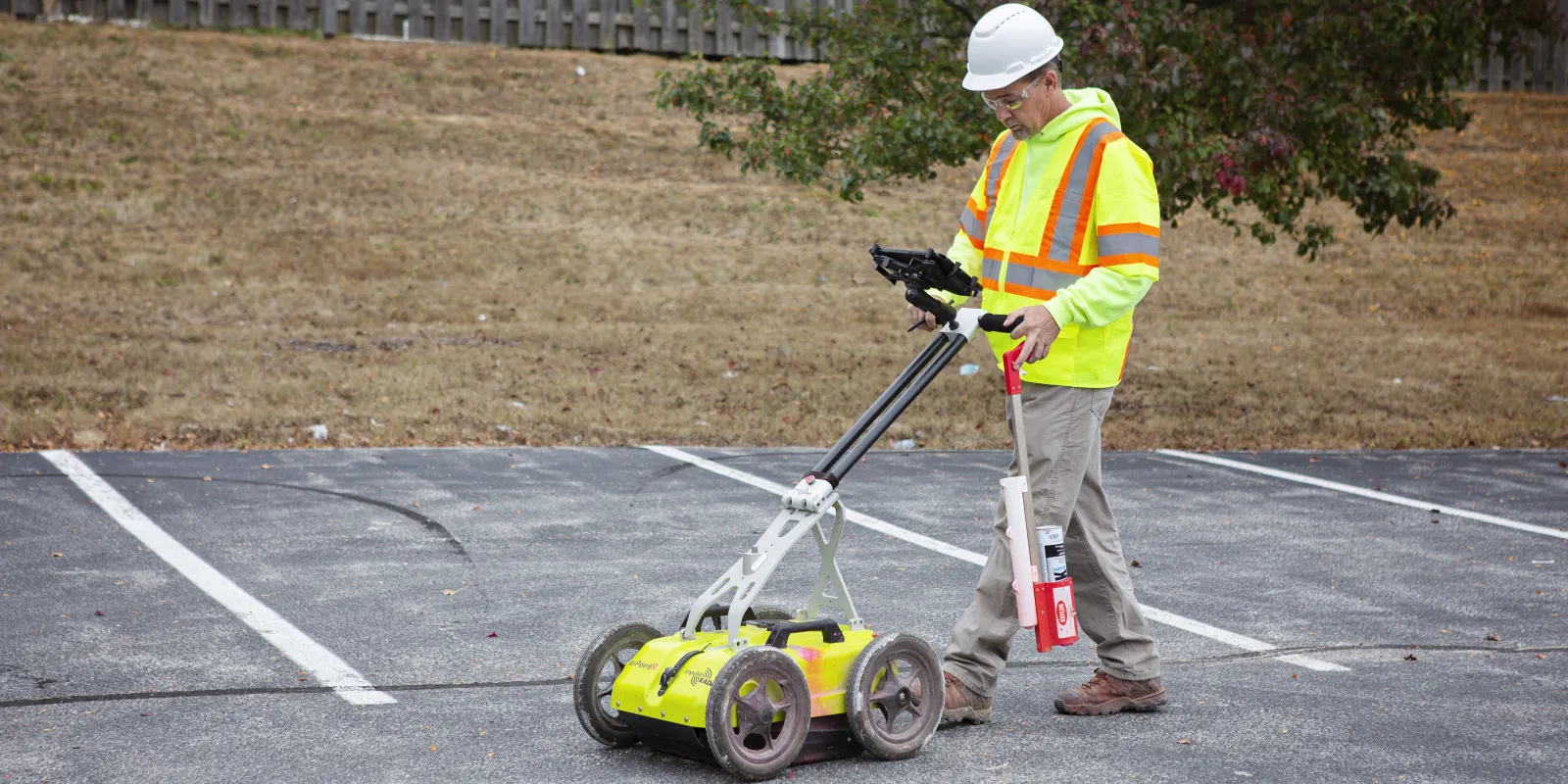

Tuesday, May 28th 2024
What is GPR:
Ground Penetrating RADAR, often abbreviated as GPR, is a
geophysical method that uses electromagnetic radio pulses to image the
subsurface. It operates by sending
high-frequency electromagnetic waves into the ground and then receiving those
signals which are reflected to it. The reflected signals provide us with
information about the subsurface features and yields insight into the
composition of and approximate depths of those features.
How does it work:
We've already stated that GPR operates on the principle of sending high-frequency EM pulses into the ground and recording the reflections that bounce back, but what is it that causes these reflections? The reflections occur when the radar waves encounter changes in the dielectric properties of the subsurface materials. These dielectric changes occur with transitions between soil and rock, the presence of buried objects, or moisture content variations.
To recap, the radar antenna emits pulses, the pulses bounce
off the transitions, where they are then detected by the receiver. Next,
utilizing advanced software the GPR system analyzes the time it takes for the
signals to return and their amplitude to create a detailed image (radargram) of
what has been detected beneath. This radargram is then interpreted in real time
by the GPR operator to determine what objects or structures have been detected.
Due to its ability to successfully detect a plethora of underground features and objects GPR has a varied and wide-ranging set of applications. GPR technologies can play a part in Archaeology, Civil Engineering, environmental or geological studies, to determine the thickness of the ice roads in Alaska, to find buried explosives in a war zone, or in Blood Hound's case, utility locating and mapping. GPR is truly a versatile and exciting piece of technology.
Utility mapping is one of the most common "every-day" applications of GPR technology. This tool allows us to locate "unlocatable" utility lines and structures such as pipes, cables, and conduits. Or when used with an ultra-high frequency antenna, detect objects imbedded within concrete slabs such as post-tension cables and rebar. In this ultra-high frequency application, the GPR system can detect objects as thin as a piece of fishing line within the slab.
Challenges and Limitations:
While GPR is a powerful tool, it does have some
limitations. The first of which is accessibility. In the utility locating
application, the GPR system takes on the approximate shape and dimensions of a
push lawn mower. If you would be unable
to "mow the grass" in an area of dense vegetation, or uneven terrain due to
accessibility issues, you would also be unable to deploy GPR in that area, and
an initial site readiness preparation might be necessary. The depth to which GPR can penetrate is also
an issue and is dependent on various factors, including the selected frequency
of the radar waves, the soil type, and the presence of moisture within the
media you are looking to image. Lastly,
GPR data is open to the interpretation of the operator. Successful and accurate interpretation
requires experience, expertise, and careful analysis to correctly identify and
distinguish between different subsurface features. We must remember that GPR
systems "see" rocks, tree roots, buried debris, and utilities as the same thing…
A reflection of a dielectric contrast between materials. It is wholly up to the operator to correctly
determine what is what.
Conclusion:
Ground-penetrating RADAR or "GPR" is a versatile and
valuable tool that has transformed our ability to explore and "see" what is
hidden within the subsurface world. From
uncovering ancient civilizations to marking the 20 feet of water service to
your home, GPR continues to enhance our ability to find the invisible. As technology advances and our understanding
of GPR and its applications improves, the implementation of these systems are
likely to expand even further, unlocking new insights into the hidden worlds
beneath our feet.